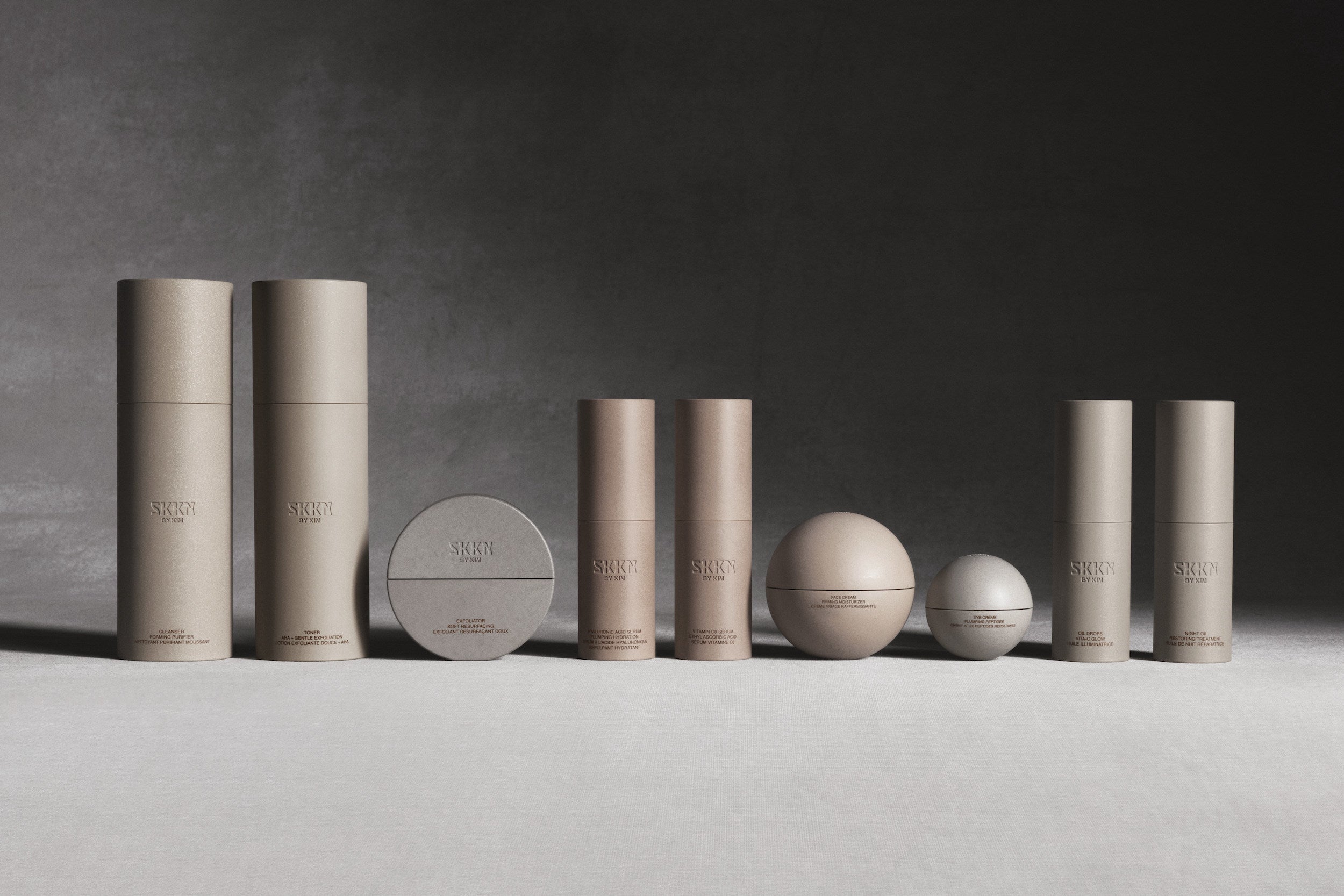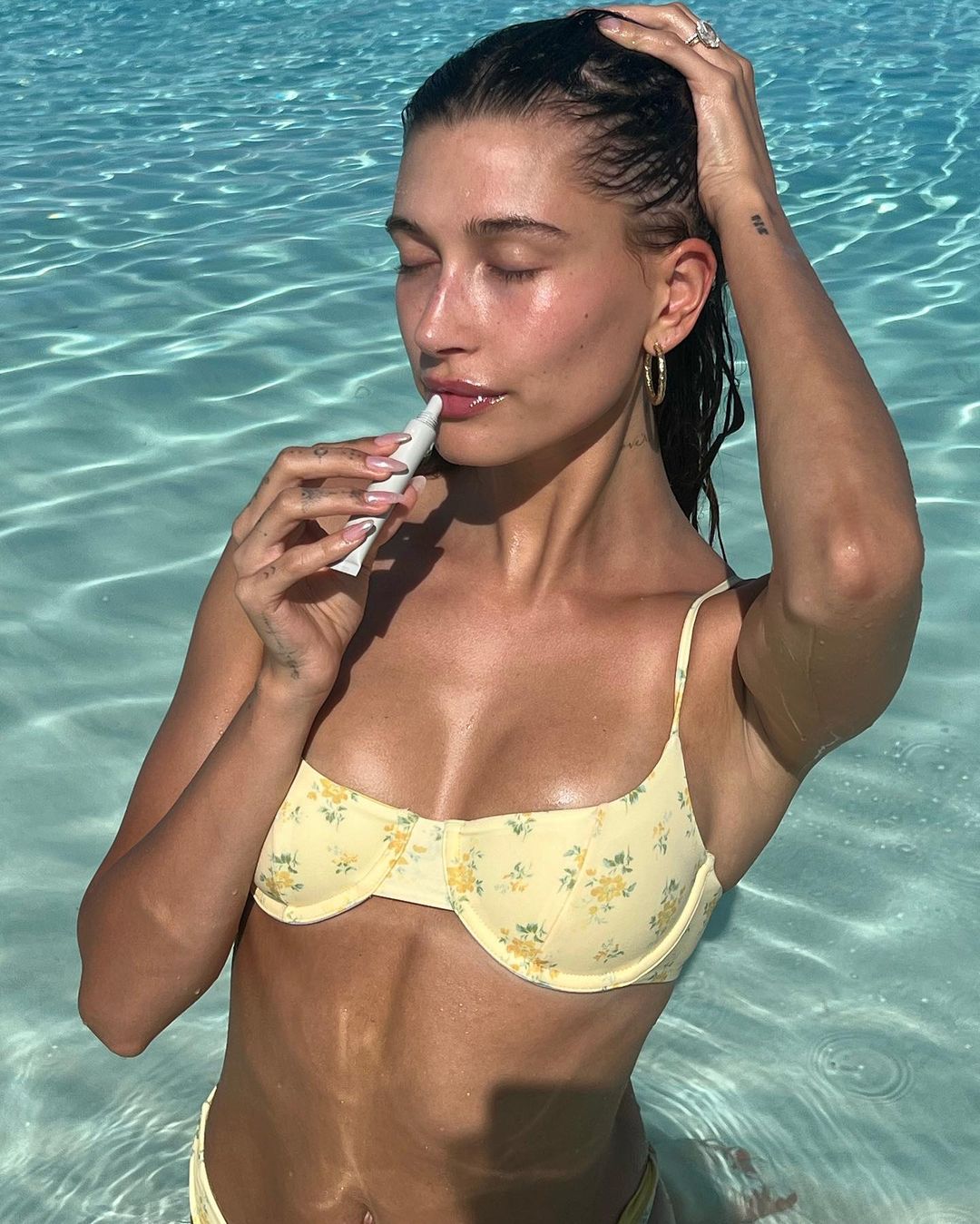
I’m a particularly squeamish person. I’m easily put off by unsavoury smells and icky textures. I’ll squeal at the sight of a worm. A maggot. God forbid, an ugly slug. And yet, I have felt perfectly comfortable rubbing snail slime onto my face for the best part of the last three months. This thought dawns on me one Saturday, while I’m applying onto my bare skin the secretion that oozes from snail glands. Now I would never usually rub snail on my face. That would be ridiculous. But this has been packaged up in a sleek bottle, and a few hundred TikTok users have convinced me it’s worth having. It’s been promised to moisturise, promote collagen and improve my skin’s elasticity, so I’m game.
Although snail mucin in skincare is not a new concept, it is a star ingredient in one of countless products that have gone viral on TikTok over the past year or so. Other practices (some good, some terrible) made popular by the platform include dunking your face in ice water, contouring with sunscreen, DIY acid-based masks and slugging – that means coating your face with an occlusive, such as Vaseline, in a bid to seal in moisture. Appetite for skin-related content is huge – the #SkinTok hashtag has almost five billion views, while #skincare has been viewed 103 billion times. As interest in our skin and what we use on it has increased, so has the number of products being pushed by content creators, brands and even dermatologists.
Unsurprisingly, the industry is booming. As per market research group NPD, skincare product sales in the US grew between 15 and 24 per cent in 2021, while Mintel estimates that the UK’s skincare industry could rake in £1.56bn in 2022. Where the money flows, celebrities follow. Kim Kardashian’s nine-step skincare range –SKKN By Kim – retails for an eye-watering £685; a moisturiser from Idris Elba and wife Sabrina’s “genderless” S’Able Labs will set you back £50. The first drop of Hailey Bieber’s “intentional skincare” brand Rhode sold out within two days. Others cashing in on the buzz include Alicia Keys (Keys Soulcare), Scarlett Johansson (The Outset) and Winnie Harlow (Cay Skin).

Dr Prem Tripathi, a facial plastic surgeon from California, has built an army of almost 600,000 followers on TikTok through debunking skincare myths and calling out beauty industry “scams” [see: eye creams]. He suggests that the uptick is a lingering result of the pandemic. Many of his patients, who couldn’t attend in-office treatments due to lockdown, tried to find solutions in products they could use at home. “People who maybe didn’t have such elaborate skincare routines previously have added so many more things to the mix when a lot of them are just not necessary,” he tells me.
“Not necessary”, I quickly learn, is a valid description for most of what I’ve been putting on my face. I have a five-step process: the snail mucin, a hyaluronic acid serum, vitamin C, moisturiser and SPF 50. I take my time and apply each layer with the rigour of a facialist. But when it comes to how much skincare we actually need, experts are united in their opinion. Skincare junkies, despair: the only products needed by the average person (who doesn’t have a condition that requires medication, such as rosacea) are a cleanser, a moisturiser to prevent water loss, and an SPF to protect against sun damage. Everything else is just “bells and whistles”, says Vanita Rattan, a doctor and skincare formulator. The reason for this is quite straightforward. “After you put three things on your face, nothing is absorbed into your skin,” Rattan says. “Your skin is almost waterproof as it is and it’s very difficult for us to absorb products. By the time you get to your fourth or fifth serum, forget it. It’s not doing anything.”
Celebrity skincare lines aim to sell to a lot of people, so that means their products can’t contain much of an active ingredient and risk being irritating— Dr Prem Tripathi
The most effective skincare routine, as per experts, is incompatible with the skincare industry. New brands are constantly emerging, while existing names continue to innovate. “The saturation of the market is actually at odds with optimal skin function,” Rattan explains. “It takes three to six months to see results from your skincare. One cell cycle is 30 days, and you need three to see any changes. You have to wait for those new skin cells to come from the basal layer [the innermost layer of the epidermis] up to the surface. So, if you’re chopping and changing your products as quickly as your lipstick, you’re not going to see any benefits. You’re going to irritate the skin, and you’re going to waste a lot of money.”
One big, recent shift in the marketing of skincare products has been the move away from gimmicky solutions – think back to peel-off masks and vibrating cleansing brushes – to a focus on ingredients backed by science. A pioneer in this field is The Ordinary. Formed in 2016, the Canadian brand made active ingredients – previously only used by luxury brands – accessible to the average consumer. In the years since, a number of competitors have followed suit, offering no-fuss skincare products with ingredients at the forefront of their brand identity.
Popular ingredients include hyaluronic acid, niacinamide, ceramides, vitamin C, retinol, azelaic acid and salicylic acid, to name a few. But as the market becomes increasingly saturated, experts say we’d be naive to believe that most products can meet their claims. All of the celebrity beauty brands mentioned in this article list active ingredients, but few mention the concentration at which they are used. Where they do, the concentration is often too low to be effective. “Celebrity skincare lines aim to sell to a lot of people, so that means their products can’t contain much of an active ingredient and risk being irritating,” Tripathi explains. “They may make your skin look great when you first apply them, but there’s really going to be no long-term difference to the skin.”
Retinol is a form of vitamin A that is often marketed alongside claims that it reduces fine lines, brightens the skin and increases collagen. To be used by the body, retinol must be converted to retinoic acid by specialised enzymes in the skin as part of a two-step process. The problem here, though, is that the rate of conversion of retinol to retinoic acid is low.
“Most of the studies on photoaging or photodamage in the last 30 years have been done on retinoic acid or tretinoin,” says Emma Craythorne, a dermatologist and star of The Bad Skin Clinic. “These are ingredients that will improve levels of collagen in the skin.” The solution would be to directly apply a retinoic acid, but these are only available on prescription. “Unfortunately, the tiny amount of retinol in the skincare product you bought over the counter is highly unlikely to fulfil its claims,” she adds.
Azelaic acid is also a popular addition, for it can help reduce inflammation. But we run into the same problem. “To be effective, it has to be at the right dose, at minimum a concentration of around 15 per cent”, she explains. “But you can’t buy that over the counter. Loads of expensive brands are putting it in at two per cent or four per cent, but that isn’t going to have a biological effect on the cells.”
It’s thinking that if we can talk with authority about the science of a product we are using, it’s somehow not giving in to an impossible standard of beauty— Jessica DeFino
In another blow to the SkinTok community (myself included), experts have raised their eyebrows at the widespread use of hyaluronic acid. Claims attached to some well-regarded hyaluronic acid serums on the market include “deeply hydrating”, the ability to “infuse skin with moisture” and “bind water to the skin from the deepest layers of the skin to the surface”. For more than two years now, I’ve held the belief that hyaluronic acid is key to maintaining plump, moisturised-from-the-inside skin.
Claythorne corrects me. “It just can’t do that,” she says. “It’s too huge of a molecule. It’s a wonderful substance, made by our body, that is found in the skin’s dermis. As we age the level of it naturally decreases, but we are constantly making it. When you put hyaluronic acid onto the skin, it simply acts like a water sealant. It does draw moisture and water to the skin, but it just sits on the surface, it doesn’t get absorbed.”
With this knowledge in tow, I can’t help but feel like I’ve been duped. I’m part of the 19 per cent of consumers who research the ingredients of an item before making a purchase (as per data shared with The Independent by Mintel), but products entirely based around actives always felt like a safe bet. They would surely do exactly what they claim. After all, it’s science!

The move towards “science-based” skincare, though, makes people believe they understand their skin better while perpetuating a historic beauty standard. That’s according to self-described “pro-skin/anti-product” beauty reporter Jessica DeFino. “People are actually only learning more about their products, not the science of their own skin,” she says. “This is an effort by the industry to manipulate the customer into spending her time and money on beauty, while also feeling empowered and intelligent. It’s thinking that if we can talk with authority about the science of a product we are using, it’s somehow not giving in to an impossible standard of beauty.”
Dr Alia Ahmed, a dermatologist who is trained in psychology, says our affinity for multi-step skincare may be rooted in how the routine makes us feel. “During the pandemic, this notion of self-care really took hold,” she says. “I do say skincare can be self-care when you’re mindfully applying those products. When you pay attention to what you’re putting on, how it feels on the skin and what it smells like, it improves your use of that product, it relaxes you. In addition, it can help improve your mood.”
As a skincare aficionado who likes to pretend that I’m hosting an episode of Vogue Beauty Secrets every time I reach for my moisturiser, I admit that Ahmed’s got it right – that’s exactly how my skincare routine makes me feel. DeFino, though, is unconvinced. She tells me I’ve been brainwashed. “Where we’ve gone wrong is that we’ve allowed the beauty industry to create a ritual that revolves around products,” she says. “You can still have a relaxing morning or bedtime routine, for instance by doing a facial massage, that doesn’t require you to spend money.”
DeFino’s argument takes me back to that Saturday morning with snail ooze on my face. It was the first time I stopped to consider why I insisted on following this multi-step routine. Do I actually care about the health of my skin? Or do I care only because I believe that eventually I might have a smooth, crystal-clear canvas to rival that of the next celebrity to bring out a skincare line? I think of my insistence on wearing SPF every day without fail, even when I’m not leaving the house, and the answer becomes clear. I’m not trying to avoid sun damage to my skin, I’m living in fear of my first wrinkle.
I’m not alone: a 2014 study by the University of Colorado found that young people were more likely to wear SPF if they knew how it could damage their appearance, rather than the actual functionality of their skin. Rather ironically, it turns out our “science-backed” multi-step routines may just be another indicator of what has always rung true – that the industry is less concerned about the actual health of our skin than it is about selling us a product that can make us feel beautiful. We fall for it every time.







